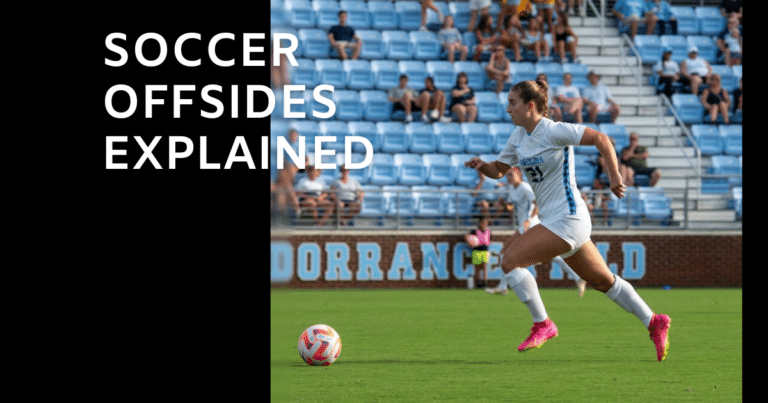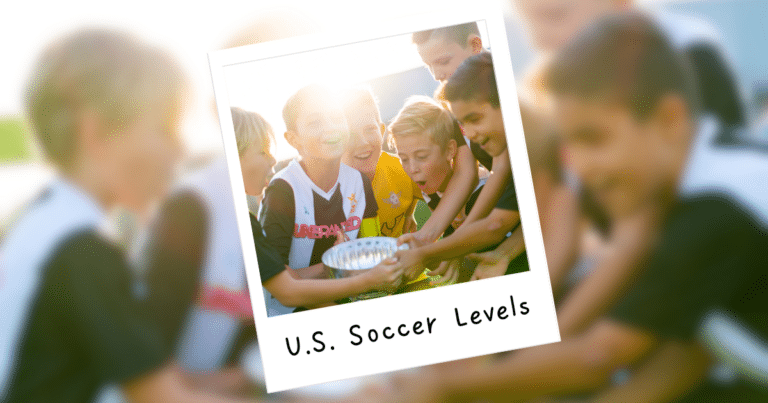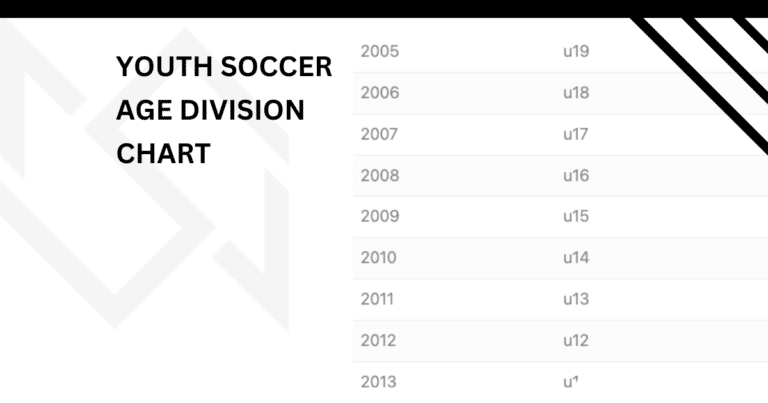What Does GD Mean in Soccer?

In soccer, GD stands for “goal difference,” which is a metric used to determine a team’s performance in a season. It is calculated by subtracting the number of goals a team has conceded from the number of goals they have scored.
Key Takeaways From This Article
- Goal Difference = Goals For – Goals Against
- A positive goal difference typically means a team’s offensive game is strong or that their defense is solid.
- Goal difference can be a differentiator if two or more teams are tied in the standings.
Goal Difference is an important statistic in soccer, especially in youth and professional league tables. It helps to differentiate between teams with the same number of total points and gives coaches an indication of their team’s performance throughout a season.
A positive goal difference means a team has scored more goals than they have conceded, while a negative goal difference means the opposite.
Significance of Goal Difference (GD)
Goal Difference is an important metric that is used to rank teams in a league table. It is usually used as the second tiebreaker after points.
A team with a higher GD is ranked higher than a team with a lower GD, even if they have the same number of points.
How is GD Calculated?
Calculating Goal Difference is simple. You just need to subtract the number of goals a team has conceded from the number of goals they have scored. The formula for calculating GD is:
GD = Goals For (GF) – Goals Against (GA)

For example, in the Premier League table above, Arsenal has scored 77 goals and conceded 34 goals, their GD is 43.
77 (GF) – 34 (GA) = 43 (GD)
A positive GD usually indicates that a team has a strong offense and is good at scoring goals. On the other hand, a negative GD typically indicates that a team has a weak defense and is conceding too many goals.
It is important to note that GD is not the same as the goal average. Goal average is another metric used in soccer to measure a team’s performance. It is calculated by dividing the number of goals a team has scored by the number of games they have played. GD is a more accurate metric as it takes into account both the offense and defense of a team.
A team having a clean sheet obviously helps the GD ratio. Having a solid defense with great goalkeeping should result in a lower GD. This is assuming the team can score occasionally.
Importance of Goal Differential

Tiebreaker
When teams finish level on points in a league, the goal difference is often the first tiebreaker to determine the final standings. This means that teams with a better GD have an advantage over their opponents.
In some leagues, the head-to-head record or the number of goals scored can also be used as tiebreakers, but GD is the most common method.
League Standings
A team with a higher GD is usually ranked higher in the league table, even if they have the same number of points as another team.
This is because GD reflects a team’s overall performance throughout the season, rather than just their results in individual matches.
For example, if two teams have played the same number of matches and have the same points, the team with the better GD will be ranked higher in the league table.
Other Factors
Other factors such as the number of matches played, the number of wins, the number of draws (ties), and the number of losses also play a role.
Additionally, most leagues award 3 points for a win and 1 point for a draw, which can affect the final standings. In these leagues, a team that wins more matches but has a lower GD than their rivals may still finish higher in the league table.
GD in the FIFA World Cup
The FIFA World Cup is the biggest and most prestigious soccer competition in the world. It’s held every four years and attracts the best teams, players, and coaches from around the globe.
The tournament is known for its intense matches, nail-biting finishes, and incredible goals.

But, what does GD mean in the context of the FIFA World Cup?
GD, or Goal Difference, is a crucial statistic in the FIFA World Cup. It’s used to determine the ranking of teams in the group stage. In the group stage, teams are divided into groups of four, and each team plays the other teams in their group once. The top two teams from each group advance to the knockout stage.
During the group stage, teams are awarded three points for a win, one point for a draw, and zero points for a loss. If two or more teams have the same number of points, the team with the better GD will be ranked higher.
In the 2014 World Cup, for example, Algeria and Russia both finished with four points in Group H. However, Algeria had a GD of +1, while Russia had a GD of 0. This meant that Algeria advanced to the knockout stage, while Russia was eliminated.
Now that you know the significance of the Goal Difference, try to remember to keep an eye on it during the next World Cup! It could be the difference between a team moving on or packing their bags to fly home.
How It’s Used in Youth Soccer
In some youth club leagues, GD may be reflected as an average (GD/M) which is the Goal Difference per Match. Some concept applies as above. The screenshot below shows LA Football Club’s MLS NEXT U14 team with a GD/M of 6.64 which is 7.20 (GF/M) – .56 (GA/M).

On the other hand, ECNL’s league standings are similar to the EPL where it is a running total. The GD is tallied after each game is over and the coaches record their score.

Conclusion
You now have a better understanding of what GD means in soccer, and how it is calculated. Remember, GD is calculated by subtracting the number of goals a team has conceded from the number of goals they have scored.
When playing a soccer game, it is essential to keep a close eye on the GD, as conceding goals can significantly affect the final result. Injury time and extra time can also impact a team’s GD, so it’s important to stay focused and maintain a strong defense until the final whistle.
Overall, GD is an important statistic in soccer that can make a significant difference in a team’s position in the league standings.
By understanding how it is calculated and the factors that can impact it, you can better analyze and appreciate the game of soccer! I hope all of this helps!
Frequently Asked Questions
What is a GD in soccer?
GD, in soccer, stands for goal difference or goal differential. It is sometimes used as a tiebreaker if teams are tied for total points in their standings.
What does GF mean in soccer?
GF stands for ‘Goals For’ and means the total number of goals that a team has scored in a particular competition or season.
What does GA mean in soccer?
GA stands for ”Goals Against’. It refers to the total number of goals that a team has conceded or allowed in a particular competition or season.

Written By: Beau Bridges
Beau is the founder of SoccerNovo, dedicated to helping players and parents navigate the youth soccer landscape. As a former youth coach and soccer parent, he shares insights on player development, recruiting, and the ever-evolving soccer scene in the U.S.
Let’s connect







